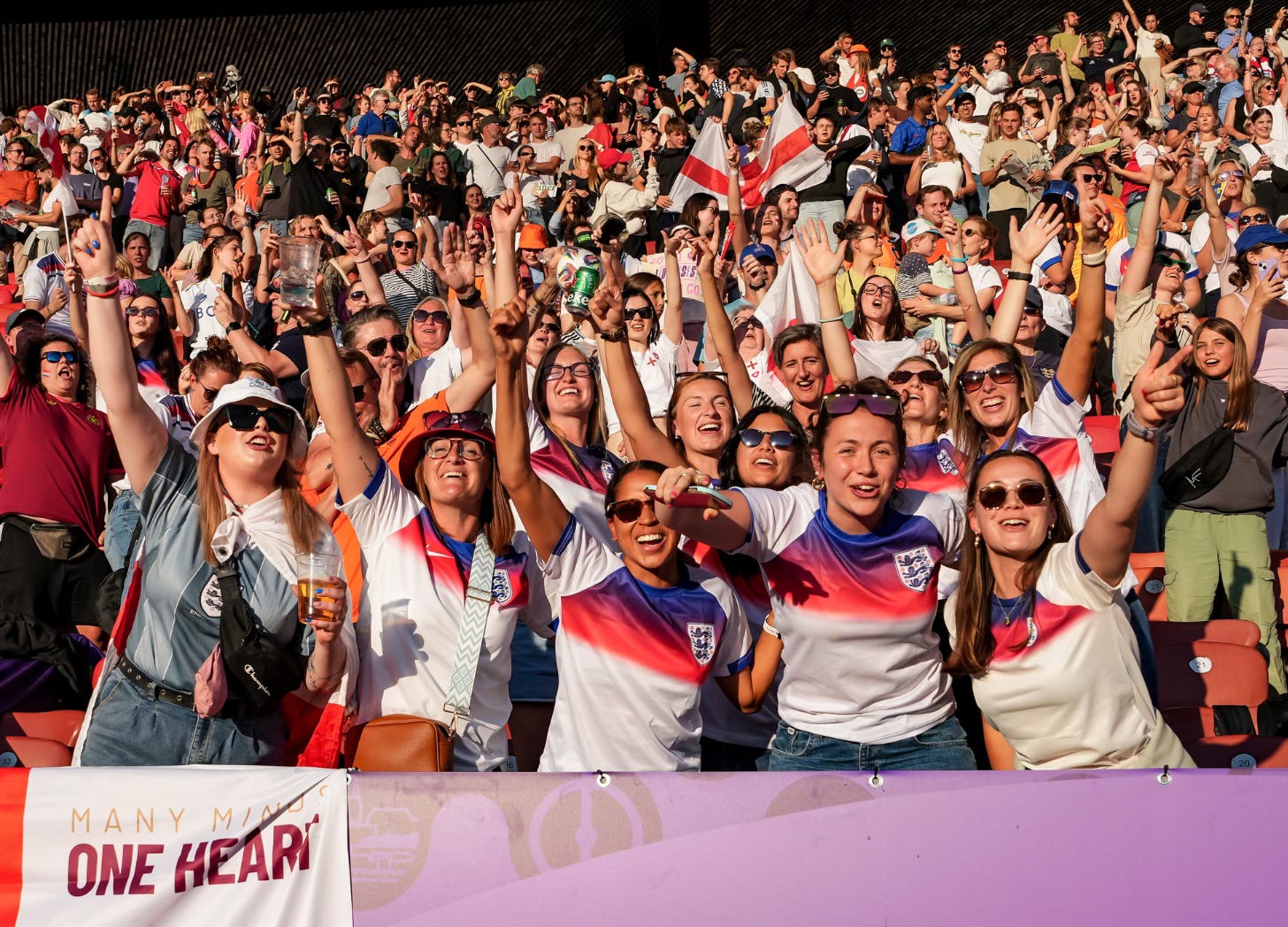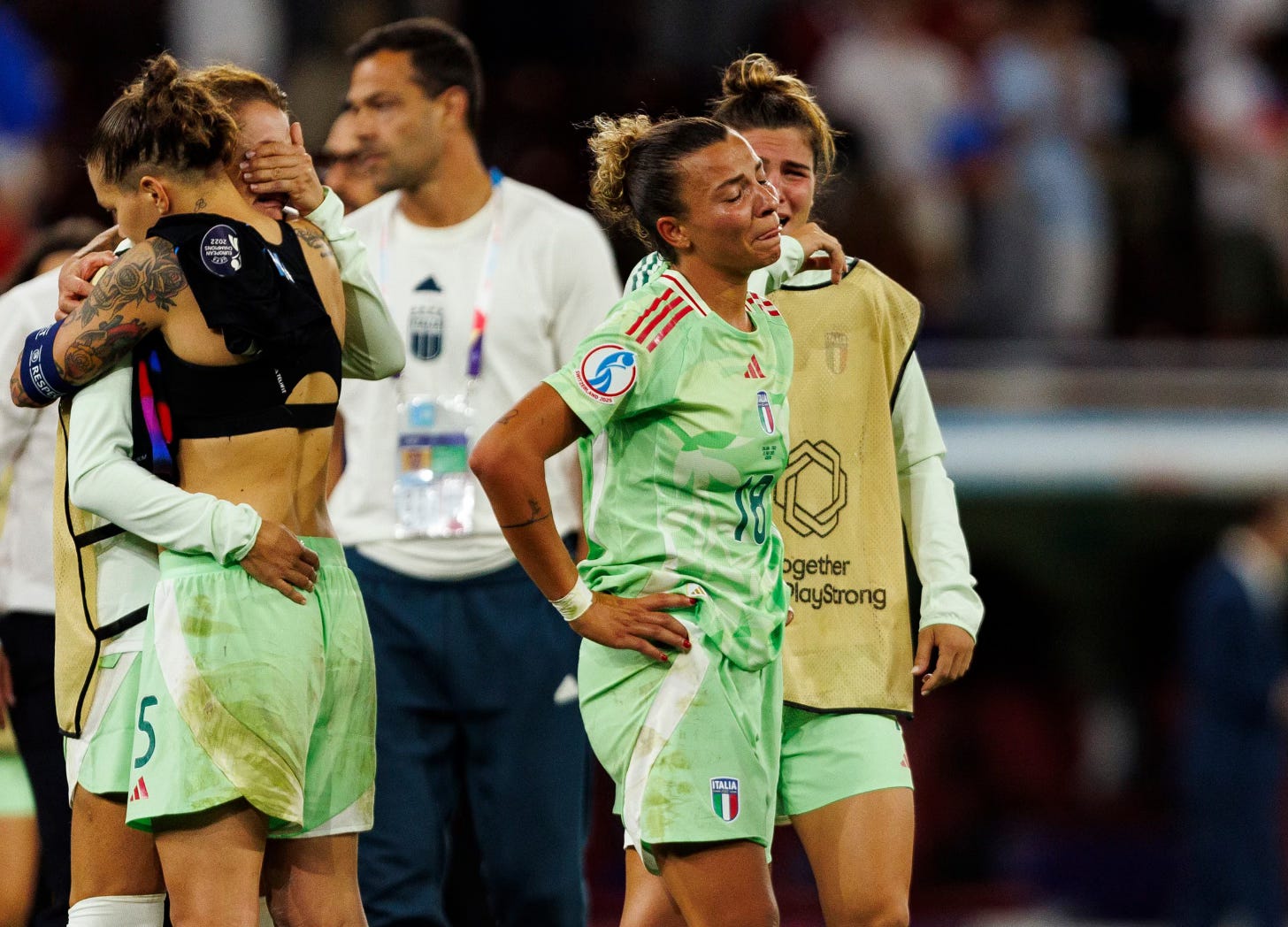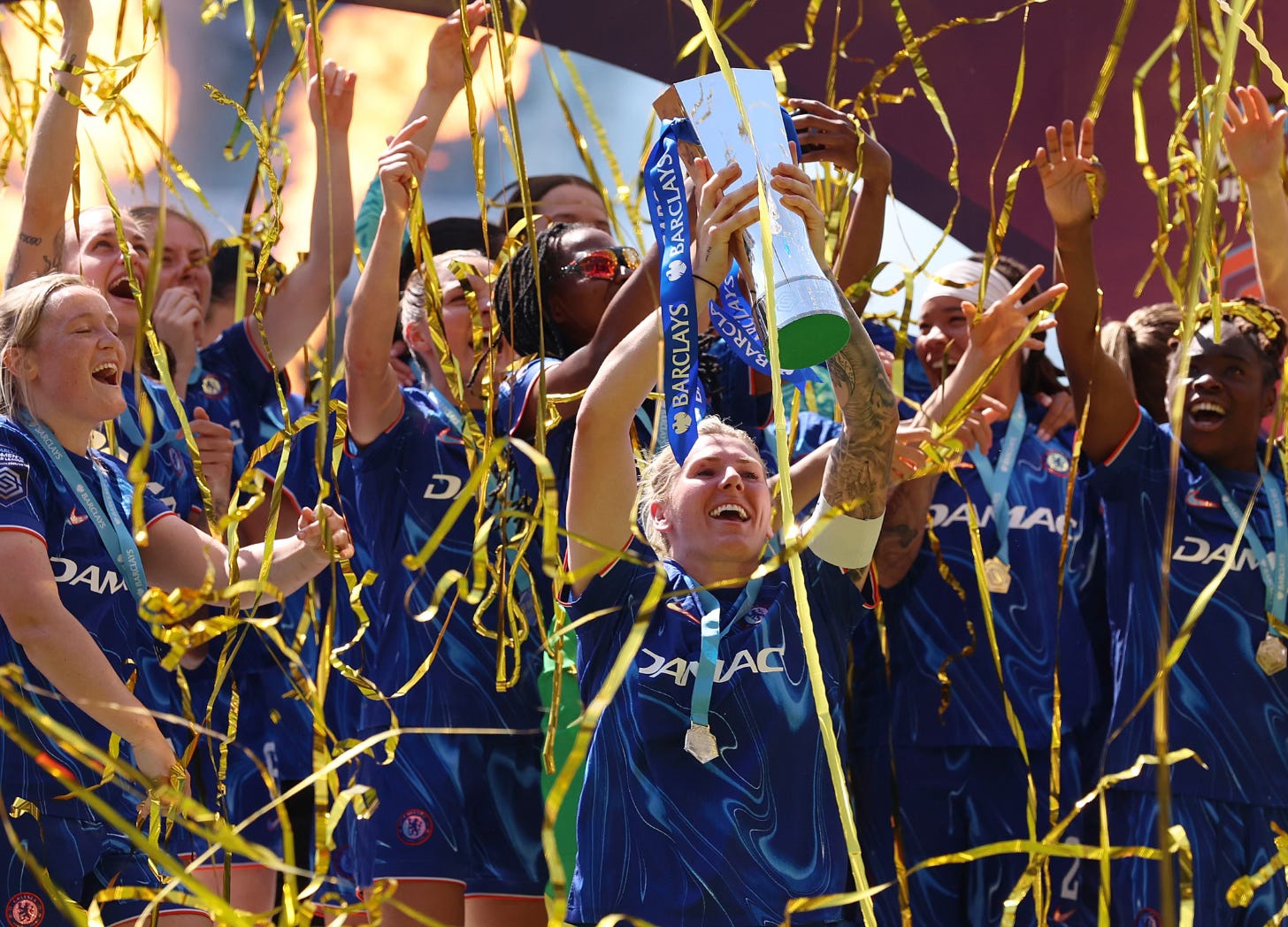Female sports fandom isn't just a moment, it's a movement
Players and fans have built a culture of inclusive spaces, down-to-earth athletes, and a place where supporters feel seen.
You don’t even have to be a sports fan to see that women’s sport is booming: stadiums are selling out, TV audiences are breaking records, and fandom is growing fast.
For decades, traditional sport struggled to connect with young women. But a 2023 Comscore report found a 22% increase in US women aged 18-24 visiting sports websites and apps - a faster rise than any other age group.
For a generation raised on figures like Simone Biles and Serena Williams, sport doesn’t feel like something they need permission to join - it already belongs to them.
Take women’s football - set to become one of the world’s top five sports by 2030.
Fans, about 60% of whom are female in the UK, have built something different from the men’s following, with a sense of closeness and empathy that comes partly from the fact that the sport is still growing.
Some have found a home in women’s football after feeling ignored or unwelcome in the men’s sport, something Dr Christina Philippou, an associate professor in sports finance at the University of Portsmouth, calls a "safe overflow" from the men’s game.
The atmosphere can feel more inviting, says Stacey Pope, a gender and sport professor at Durham University: "Many women talk about feeling uncomfortable in men's football spaces... whereas they describe the atmosphere at women's games as more welcoming, more inclusive."
With rising costs for tickets to men’s games, women’s games are also more accessible. "Tickets are affordable, it’s family-friendly," says Philippou. "And that’s still a big factor in who shows up."
And as they have often been less high-profile, female players can give more time to their fans. "They’re seen as real people, not media-trained celebrities," Pope says. "You see the mud on their shirts, you see the tears - and fans connect with that."
She says these effects all lead to the "feminisation of fandom": a culture shaped by care and connection rather than rivalry and aggression. "There’s more warmth and connection at the core of it. Fans are drawn in by empathy, by values, by the visibility of players who reflect their lives."
At matches, the difference is obvious. Fans sit side by side, regardless of allegiance. At this summer’s Euros in Switzerland, some even followed both England and Wales. Many supporters follow players rather than clubs, says Pope: "It’s a shift from badge loyalty to people loyalty."
But the influx of money could change things. Investment in women’s sport has never been higher, with global revenue from elite sports expected to top £1.8 billion in 2025, according to Deloitte.
For years, women’s football players signed autographs pitchside, stayed after matches for Q&As, or chatted with fans online. Now, at the biggest clubs with growing crowds, that in-person closeness has to evolve.
"Chelsea have built one of the strongest women’s teams," Philippou explains. "But with that comes demand. The fan-player interaction that used to be the norm is harder to maintain when you’ve got thousands turning up."
Later kick-offs driven by TV schedules, now that more women’s sports are televised, can raise safety concerns for attendees, and ticket prices are climbing.
This all matters. A 2024 study found that 39% of fans cite inclusivity and diversity as major reasons they attend women’s matches.
Of course, the growth of women’s sports is something to celebrate. But Philippou warns that as the sport booms, the community that drew fans in must stay at its heart. "It’s about feeling like you’re part of something. That starts to fray when fans are treated like customers rather than community."
Related articles
"We need to be asking the right questions as the money comes in," she adds, noting that clubs should be considering, "Who is this for? Are we still thinking about accessibility? Are we protecting the things that made women’s sport so powerful?"
"It’s not about wanting less for women’s sport," says Pope. "It’s about making sure we don’t replicate all the things that made people feel excluded [from the men’s game] to begin with."
There are plenty of solutions: safeguarding affordable tickets. Rethinking fan engagement. Prioritising inclusive spaces even as commercial demands grow.
Together, players and fans have built something unique: inclusive spaces, down-to-earth athletes, and a culture where supporters feel seen. If women’s football can grow on its own terms, the magic isn’t going anywhere.








